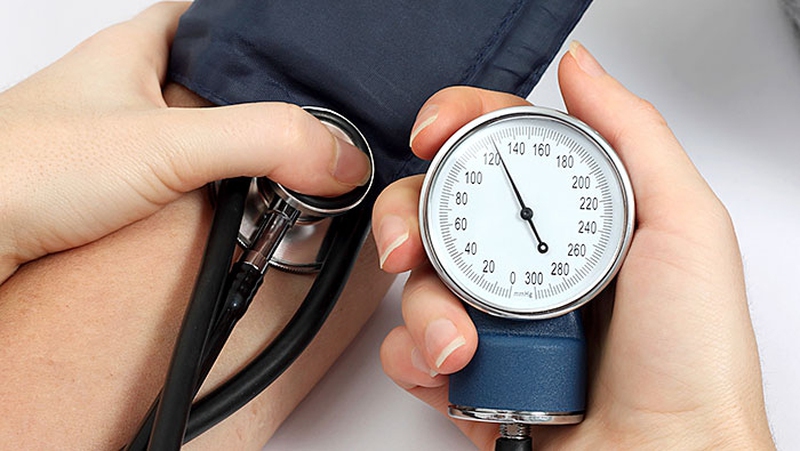One of the important things you need to check constantly is your blood pressure. Whether it is high or low as reflected on the systolic and diastolic readings, anything beyond normal levels can be a cause of concern you should pay attention to. Then what about high systolic low diastolic readings? Should this be a cause of concern? Read on to find out.

Getting to Know Systolic and Diastolic Blood Pressure
Systolic pressure, or the upper number in your blood pressure measurement, indicates the pressure in your arteries when your heart beats or during the contraction of heart muscles. The normal systolic pressure is 120 mmHg or millimeters of mercury. Anything above 120 up to 139 mmHg is a sign of prehypertension while 140 mmHg and above indicates high blood pressure.
On the other hand, diastolic pressure, or the lower number, measures the pressure in your arteries when your heart muscles are relaxed and blood refills your heart or pressure in your arteries in between two heartbeats. The normal reading for diastolic pressure is less than 80 mmHg. If yours went 90 and above, it could mean you have hypertension.
In other words, the optimal blood pressure is 120/80. Anything beyond or below these numbers could indicate heart problems and you need to consult a doctor as soon as possible to avoid further complications.
Causes of High Systolic Low Diastolic Reading
Isolated Diastolic Hypotension
This happens when your diastolic reading is low, often below 60 mmHg while the systolic reading indicates above 100 mmHg.
Causes of this condition include:
Intake of medicines that helps you control your high systolic blood pressure
Other types of medicines such as diuretics, pain killers, and anti-anxiety drugs
Dehydration
Electrolyte deficiencies due to either low or high levels of potassium
Cardiovascular problems such as low heart rate or heart valve issues
Endocrine disorders
Lack of nutrients such as vitamin B12 or folate
In rare instances, this condition might be due to hormonal deficiencies, anemia, or leaky aortic valves.
The good news is this condition is manageable. To normalize your blood pressure levels, here’s what you can do:
Balance and maintain your potassium levels
Increase your liquid intake, preferably 8to 10 glasses of water every day
Consider changing your blood pressure medications or your anti-hypertensive medications to avoid abnormal systolic and diastolic pressure levels.
Exercise regularly.
It is important to manage high systolic low diastolic as soon as possible to avoid complications. Otherwise, this condition could lead to heart failure or increases your risk of heart-related death.
Isolated Systolic Hypertension
Different from what have been talked above, this problem occurs when you have systolic pressure, often above 140 mmHg but your diastolic pressure is normal, which can also cause an obvious difference between the two readings.
This may be affected by:
Underlying heart condition such as heart valve problems, hyperthyroidism, or artery stiffness
Age, usually above 60 years old, which explains why this condition is more common on older adults
Gender wherein more women are at risk of developing this type of condition
Similar to isolated diastolic hypotension, this condition can also be manageable. Taking medications that helps you lower your blood pressure levels could normalize the systolic pressure levels. Lowering your salt intake, reducing your weight, and taking moderate exercise could also help in managing this condition. Alcohol must be limited to prevent further complications.
If needed, your doctor might prescribe medications such as beta-blockers, diuretics, or calcium channel blockers. The medication will depend on your existing condition and the presence of various risk factors concerning your health.
If left untreated, isolated systolic hypertension could lead to stroke, kidney disease, and heart disease. This condition could also cause damage to your organs like brain, kidney, heart, or even your eyes. So if you have noticed it, visit your doctor to treat as soon as possible.
Can You Prevent It?
Surely, you don’t want to experience any of the conditions abovementioned. That is why the saying, “Prevention is better than cure” holds true for this kind of condition.
Fortunately, you can prevent high systolic low diastolic readings with the help of the following tips and tricks:
Regularly monitor your blood pressure to help you check whether both systolic and diastolic are within the normal range.
Exercise regularly
Always eat healthy
Avoid smoking and drinking alcohol
Maintain a healthy weight
Minimize your salt intake
Treat blood pressure-related conditions on the onset before it gets worse
The bottom line is to get treatment as soon as you can and don’t wait for your condition to get worse. If you suspect that something is wrong with your body, it is best to consult a doctor for proper diagnosis. Consequently, he could prescribe medications and advice you to do certain things to normalize your blood pressure levels.
Don’t self-diagnose. Blood pressure issues are no laughing matter. If you are not too careful, the worst that could happen is death.
View All Comments /Add Comment